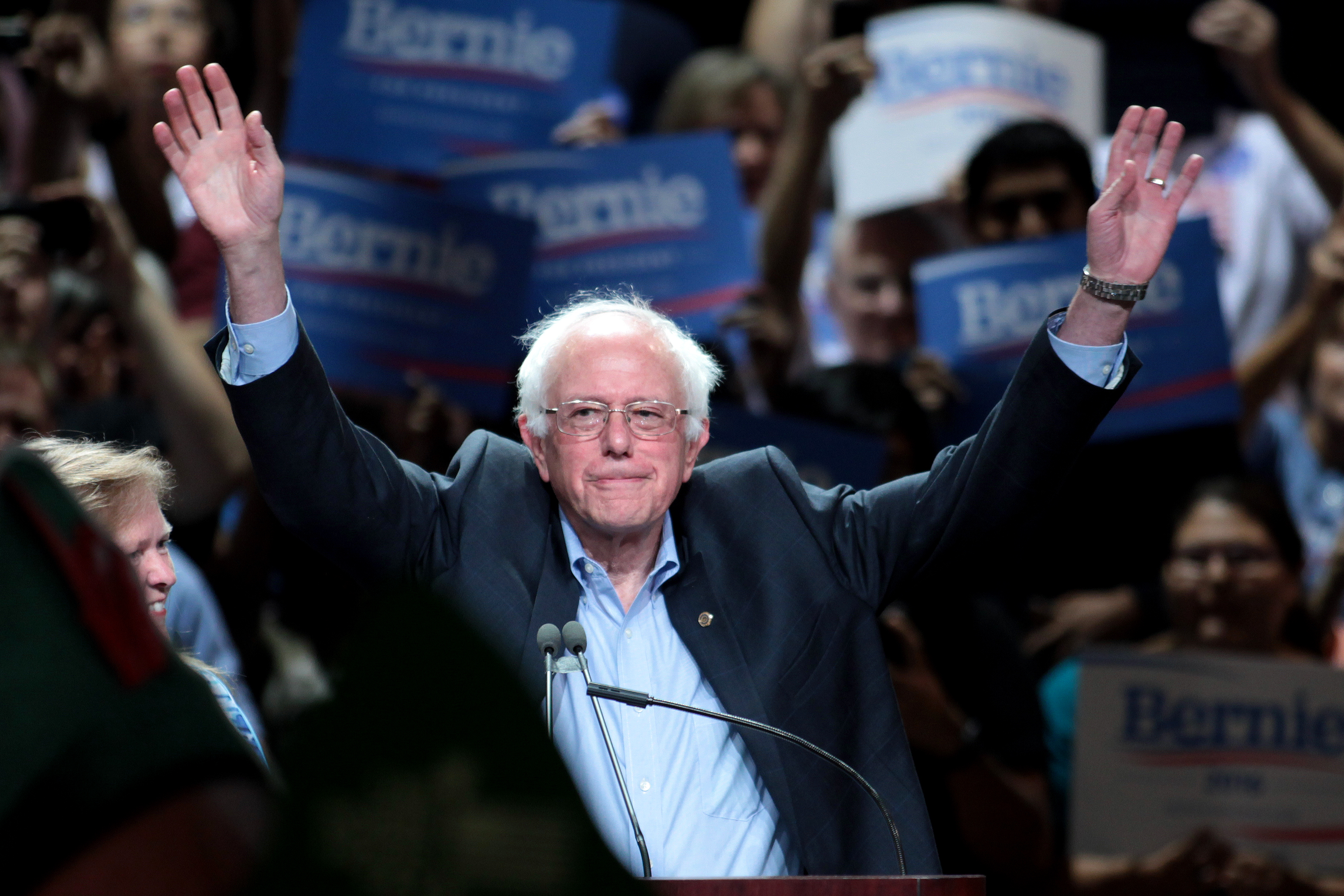By: Ryan Romano/For The Diamondback
At first glance, Donald Trump and Bernie Sanders seem to have a lot in common. Both are insurgent outsiders who have threatened to upset the predicted winners, albeit in different parties. Both have adopted populist rhetoric, vowing to take on the establishment and fight for the average American. Both speak with passion many politicians can only imitate and draw crowds who crave that zeal. For these reasons, as well as a few superficial policy similarities, many pundits — including The Diamondback’s Matt Dragonette — have likened Sanders to Trump.
However, this comparison belies the fundamental distinction between the two candidates. Trump and Sanders obviously have their differences, but one integral characteristic sets them apart. To understand it, one must first understand the two key changes in the U.S. political climate over the past several decades.
The first overall change is that America has moved to the left on social issues. Same-sex marriage has become the law of the land, and an increasing number of Americans support the rights of the LGBT community. Moral objections to premarital sex and divorce are at all-time lows. Under the Affordable Care Act, more Americans than ever have obtained health insurance. Although racism certainly still exists, racist views have declined, and most racist legislation has correctly disappeared. Likewise, despite recent abortion restrictions at the state level, the post-Roe v. Wade America has more access to the procedure than it did before. And the latest measures to regulate immigration, while harsh, pale in comparison to the cruel and racist restrictions of old.
According to Gallup, 21 percent of Americans in 1999 called themselves social liberals, whereas 39 percent of Americans felt they were socially conservative. By 2015, social liberals and conservatives each made up 31 percent of the population. Thus, one could reasonably posit — as Peter Beinart at The Atlantic, Akhil Reed Amar at The New York Times and others have — that America is more liberal now than ever before.
The second change in America, however, deflates that argument. At the same time that the country has moved to the left socially, it has veered to the right economically. Perhaps no period in modern U.S. history has contained the sort of fiscal conservatism seen today.
In 2013, the richest Americans had an income tax rate of just 39.6 percent, more than 30 percentage points below the highest bracket from 1936 to 1981. Deregulation in the financial sector, highlighted by the 1999 repeal of the Glass-Steagall Act, has allowed banks and investors to wreak havoc on the economy, and the recent Dodd-Frank legislation hasn’t gone far enough to counteract this. Since the 1970s, the real value of the minimum wage has stagnated, as have the wages of most American workers. Not coincidentally, the proportion of working Americans who are union members has steadily dwindled as well. Welfare reform in the 1990s has devastated the poor, especially those in deep poverty. Altogether, the U.S. has clearly become a fiscally conservative nation as it’s moved toward social liberalism.
Here, the key difference between Trump and Sanders emerges. Each of these candidates attacks a different change — Trump pushes back against social liberalism, and Sanders resists economic conservatism.
Trump has built his platform on demagoguery and bigotry: He insults immigrants, Muslims and other minorities and thereby inflames the worst tendencies of the country. He might not share all of the regressive social views of his Republican cohorts — in the past, he’s expressed some support for gay marriage and abortion access — but an opposition to social liberalism clearly powers his campaign. When Trump talks about “making America great again,” he means undoing decades of progress on these issues.
Sanders, by contrast, focuses his rage on fiscal conservatism. His central talking points and proposals include heavy restrictions on banks and investors, dramatic tax hikes for high earners, a $15 minimum wage, affordable college tuition and massive jobs programs. Unlike racial and religious minorities, the people Sanders targets in his stump speeches — Wall Street, the one percent, and such — actually bear responsibility for making the U.S. worse. Should the country follow the path that Sanders wants it to, the economic prosperity of the mid-20th century could return.
Moreover, on one of the key issues where Sanders and Trump align — their opposition to the Trans-Pacific Partnership — their different approaches separate them. Trump frames his free-trade criticism in nativist language; his campaign website features a lengthy diatribe about China, which he feels is the driving force behind the partnership, and in debates he’s explained in no uncertain terms his distaste for the Asian nation. This “they took our jobs” style of argument lines up with the social conservatism Trump employs elsewhere and which Sanders eschews. Sanders concentrates on the business interests behind the partnership; his statement opposing the deal said it would “protect the interests of the largest multi-national corporations at the expense of workers, consumers, the environment and the foundations of American democracy.”
On health care and a few other fiscal issues, Trump is more liberal than others in his party. In this way, he resembles conservative European politicians such as France’s Marine Le Pen. But for both Le Pen and Trump, these positions aren’t front and center. Their bases follows them because of the anti-immigrant and racist opinions that they profess. Whereas Sanders has made fiscal liberalism the heart of his campaign, Trump subordinates it in favor of the social conservatism that will win him support.
The rise of populism on both sides of the political aisle has made the 2016 election a unique one. With that said, Republicans and Democrats still have big differences in their priorities, as exemplified by the distinct anti-establishment candidates they’ve rallied behind. Make no mistake — a vote for Trump is a vote for social conservatism; a vote for Sanders is a vote for economic liberalism.
Ryan Romano is a freshman journalism major. He can be reached at tripler26@gmail.com.



